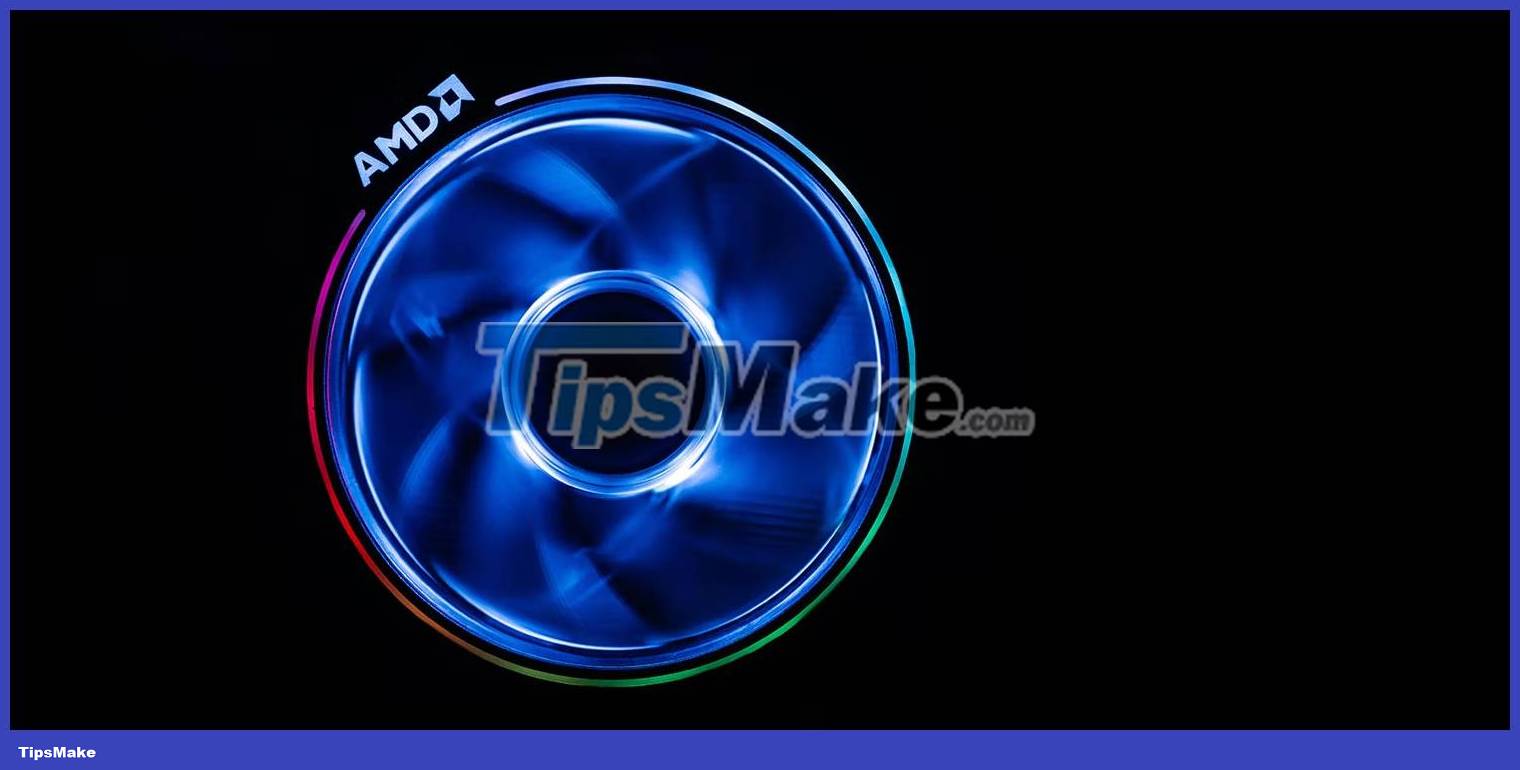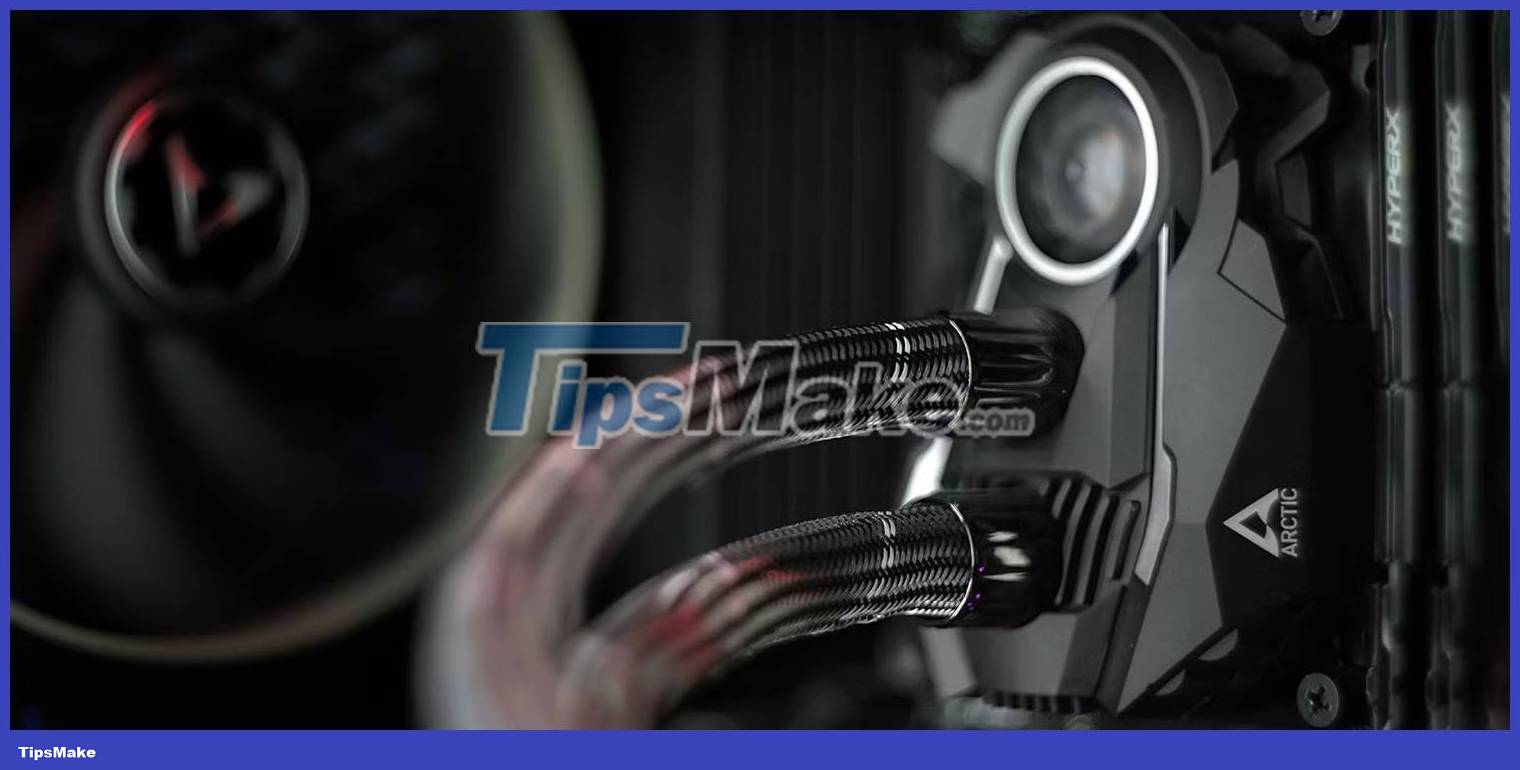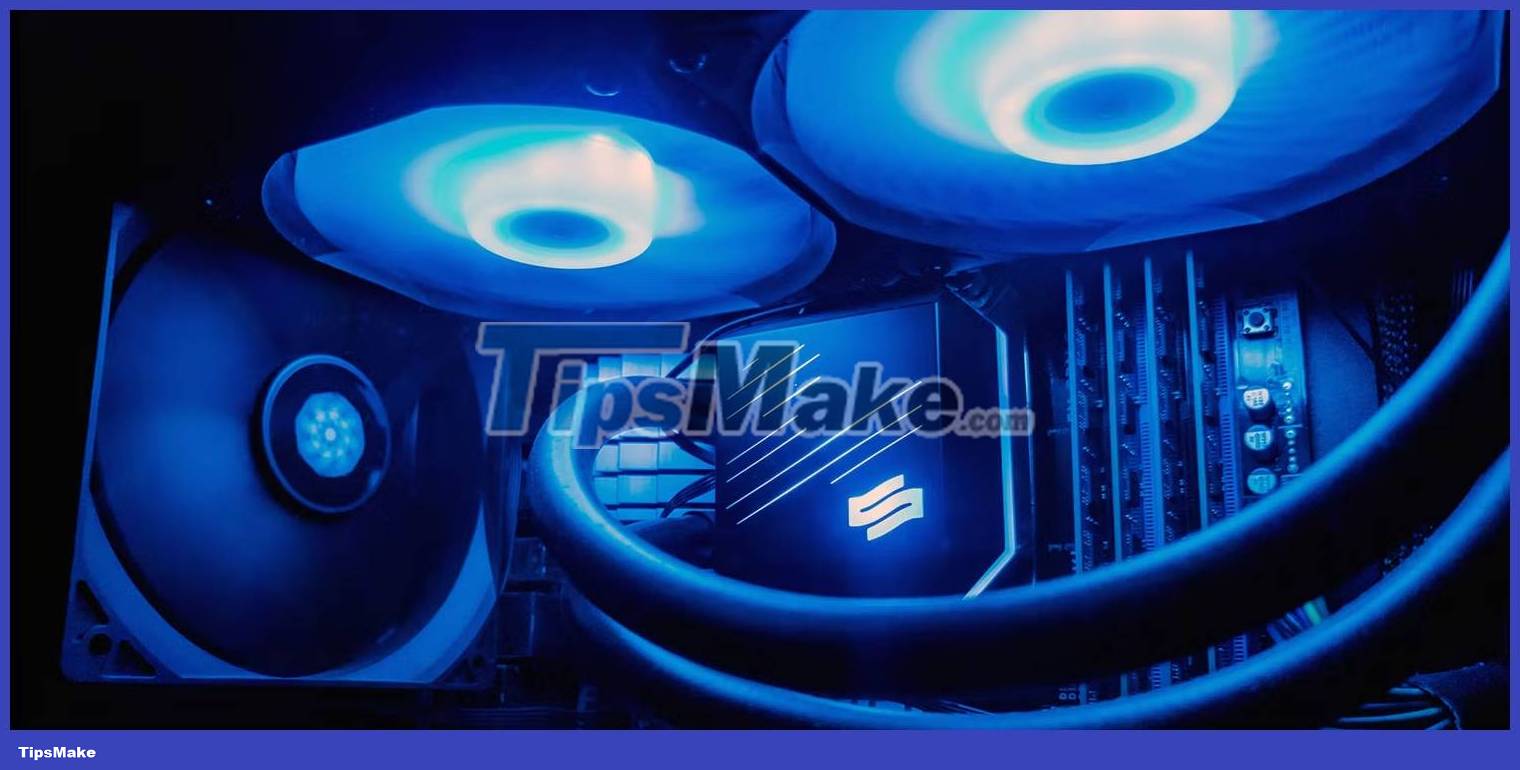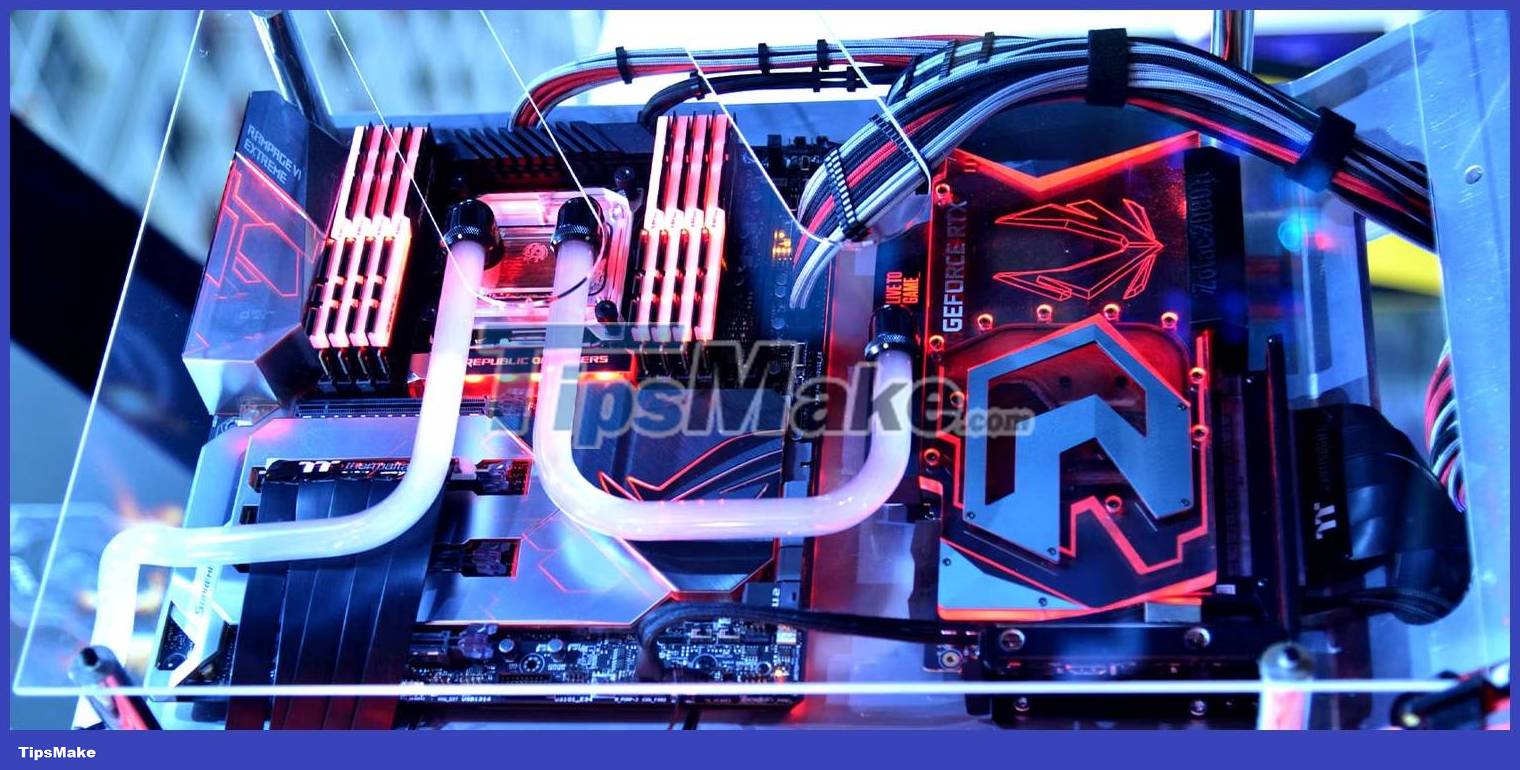What CPU coolers are there? Which type is best?
When shopping for PC parts, you've probably seen many options for cooling your PC. But if you buy a mid-range processor, it already includes a CPU cooler.
So why do you need a third-party heatsink? And what type of heatsink should I choose?
1. Air cooling

Heatsinks of this type use air to remove heat from your PC. They use a heatsink usually made of copper or aluminum with thermal paste applied to conduct heat to the heat source (usually the processor). Heat from the processor transfers to the heatsink through the temperature difference, allowing the processor to cool and perform better. The fan will then disperse the absorbed heat.
Most computers are air-cooled, as that's often the case in affordable and mid-range processors. You don't need a third-party cooler without pushing your PC to its limits. But if you want to maximize your PC's power, a third-party cooler is a must.
Stock heatsink
This is the most common PC cooler, as it usually comes with the CPU. Most of the heatsinks available are round and cup-like, with the exception of AMD's Wraith Prism heatsink, which comes with AMD Ryzen 9 7900 and Ryzen 7 7700 processors. Instead of a solid piece of metal, it features multiple heatsinks, creating a large surface area for more efficient cooling.
Stock heatsinks will suffice for most uses as they are typically designed for the included CPU. However, you may want to upgrade if you plan to overclock your computer or use an SFF case.
Tower heatsink
Stock heatsinks are limited by their design: they attach directly to the processor, with the fan blowing downwards, resulting in inadequate airflow. Tower radiators solve this problem by making the heat sink face up. Instead of attaching heatsinks directly to the processor, they are connected via a base and heat is directed to them via heat pipes.
The wings fold vertically, like a tower, increasing the surface area without taking up more motherboard space. It also allows side-mounted fans, improving airflow and efficiency.
Despite their advantages, tower heatsinks are heavy, requiring a securely attached motherboard, often supported by a backplate. Their size requires a spacious case and proper placement to avoid interfering with other components such as the GPU. Additionally, horizontal fan orientation can limit the visibility of any built-in RGB lighting. Tower heatsinks might be a good fit if you prioritize performance over aesthetics, have a large case, and don't move often.
Flat or type-C . tower heatsink
You should buy a flat tower or type-C radiator if you don't have a lot of vertical space. Basically, this is just a tower heatsink with a tilted heatsink. Most type-C coolers have smaller heatsinks than tower coolers because they have to consider other components like your RAM.
However, some manufacturers have solved this problem by using longer heat pipes (as is the case with the Noctua NH-C14S) or stacking a large heatsink on top of a smaller one (like the Jiishark JF13K). Because they sit lower on the motherboard, they're less likely to get damaged in transit.
However, although these heatsinks don't take up much vertical space in the case, they are usually larger horizontally. That means it obscures other parts of the motherboard, such as RAM and other connectors, making hardware troubleshooting more difficult.
This type of cooler is recommended if you have a smaller PC case or travel with your CPU frequently.
Low-profile heatsink
So far, the discussed radiators consume a lot of space - horizontally or vertically. But what if you want a compact PC? You can make a computer no bigger than a shoebox if you use a mini ITX motherboard and plan your build accordingly. However, tower, C-type and even stock radiators won't fit in the tight spaces of an SFF case. This is where you need a low-profile radiator.
Low-profile radiators are similar to many type-C radiators. But the main difference is that they usually have thinner heatsinks. Some low-profile heatsinks also take a similar approach to the stock heatsink, with the fins attached directly to the processor.
In general, the low-profile radiator is shorter than 70mm, allowing you to place it in nearly any case. However, they may not cool your CPU effectively. You can still get outstanding performance with a low-profile heatsink, but don't expect too much.
2. Liquid cooling

While air coolers do a great job of controlling heat, water does a better job of removing heat. So some manufacturers started making water-based radiators using heat-conducting fluids, distilled water, and other chemicals that inhibit microbial growth.
Water coolers typically have two main components - the water block, which attaches to the processor, which has the pump, and the heatsink, where the water is cooled. The water block is in maximum contact with the processor for efficient heat absorption. The warmed liquid then flows to the radiator, where two or more fans blow cool air to disperse the heat into the air.
All-in-one heatsink (AIO)

AIO heatsinks are the most common among water coolers. They are easy to install, have fewer components than custom water coolers, and are much less likely to leak. Many water blocks also have RGB, giving you a much better aesthetic.
You'll want an AIO cooler for your PC if you have a high-performance CPU, such as a 13th Gen Intel i9 or an AMD Ryzen 9 7000-Series chip. However, since AIO heatsinks are a unit, their location is often limited.
That's because you can't adjust the length of the pipes that transfer the liquid from the water block to the radiator. With this limitation, you can even run into placement issues, especially if you plan to cool your processor and GPU with water.
However, the AIO heatsink allows you to enhance the performance of your computer. Even if you have a small PC case, you can still use the AIO cooler without worrying about installation.
Custom water cooling

Custom water cooling uses water block and radiator like AIO. But what makes the difference is that you have to design the pipes yourself and need your own pump and water tank.
Since custom water coolers are handmade, you must remove all bubbles in the system, or you may damage the system. You must also add coolant carefully and change the coolant regularly.
Heatsinks of this type are more risky and prone to leaks. You also have to be careful when troubleshooting your PC, as you could damage the hoses or pipes, causing liquid to leak into your computer.
However, custom water cooling allows you to have the best designs. And, if you have a high-performance PC with maximum overclocking, a custom water cooler can cool it better.
So, if you have an unlimited budget, don't move your PC and want the best cooling, go for a custom water cooling solution.
3. Cooling by immersion liquid
Also known as direct liquid cooling, this technique dips the computer directly into the coolant. This is the most effective way to cool down a PC but also the most expensive.
You need special liquid to submerge your PC in it. Water will not do that because it will short the components in the machine. Instead, mineral oil is used instead. There are also other coolants, but they are more expensive.
Since your computer is submerged in coolant, it is messy and difficult to maintain. And, if you live in a warm area, you'll still need a cooler and a pump to make sure the coolant is working efficiently.
However, immersion liquid cooling offers the best possible performance. In fact, Gigabyte has developed immersion liquid cooling technology for data centers. So if it can cool hundreds, maybe even thousands of processors in a single server, it can certainly work well for your gaming PC.
So, if money is not an issue and you want a unique solution in your room, you should use an immersion liquid cooling system.
You should read it
- How to choose to buy a cooler according to the room size
- Top 3 coolers that cost less than 3 million cannot be missed in the summer
- Are Nakami coolers good? Nakami cooler price?
- Buy any brand coolers?
- What country is Sumika's air cooler? Is that good?
- 9 reasons you should choose a cooler instead of air conditioner
 How to create a Gigabit Ethernet cable with simple tools
How to create a Gigabit Ethernet cable with simple tools What does Cherry MX compatibility mean?
What does Cherry MX compatibility mean? 4 reasons to switch to Intel Arc GPU
4 reasons to switch to Intel Arc GPU 6 Best RGB RAM 2023
6 Best RGB RAM 2023 7 simple ways to increase the life of your external hard drive
7 simple ways to increase the life of your external hard drive Everything you need to know about AMD's A620 Entry-level motherboards
Everything you need to know about AMD's A620 Entry-level motherboards